
How to Travel Alaska on a Budget
Updated March 2023, How to Travel Alaska on a Budget was originally written in April 2017
It’s no lie: Alaska is expensive, everything in Alaska is expensive, but it is totally possible to travel Alaska on a budget. Tourism in Alaska seems to be geared to target people on high budgets and with almost zero public transportation, traveling Alaska on the cheap can seem daunting when you’re early in the planning stages.
But not to worry, that’s where I come in. I was born, raised, and still live in Alaska. I do try and get out to see as much of Alaska as possible, so in this guide, I’ll let you in on my secrets to traveling Alaska affordably.
Here are some recommendations to help you travel Alaska on a budget as well as general information on how to travel Alaska. You can find even more Alaska travel info on my Ultimate Alaska Travel Guide.
Quick Alaska Budget Travel Tricks
- Come early or visit late– Alaska has a short summer. It realistically spans May to September at its outer limits. The tourist season falls along the Alaskan summer. Tourism isn’t in full swing yet in May, and the weather is typically nice and clear, making it in my opinion the most optimal month to visit and making flights, rental cars, and excursions a little cheaper. September can be a beautiful month with the change of color but it can also sprinkle a little snow from year to year as far south as Anchorage.
- Visit in the Off-Season– Are you into winter sports or want to chase the aurora borealis? If you’re up to the cold and snow the winter can be a rewarding and equally as stunning time of year to visit Alaska. Not to worry though many different winter temperatures can be found around the state, Alaska spans 1,420 miles from north to south (2,285km). Temperatures in the southeast can be balmy in comparison to the rigid interior and frozen north.
- Accommodation deals– Keep an eye out for deals on Booking.com, with an extensive selection of different accommodation options to fit every comfort level. If you’re kicking off your trip from Anchorage, check out my Best Hostels in Anchorage Guide to help you save!
- DIY– Yup, do it yourself. Cut down on costs by self-driving, pitching a tent, and preparing your own meals.
- Keep your eyes peeled for Airline Sales– We already know, getting here is expensive! Compare flights on Skyscanner and keep an eye out for the best deals.
Use Mileage– You think getting here is ridiculous, try getting around Alaska. Alaska Airlines have a pretty good stranglehold on intercity travel within the state. Alaska Airlines, American Airlines, Delta, and United all fly to Alaska. Jet Blue, Condor, Iceland Air, and Yakutia all fly to Alaska seasonally. Check to see if your preferred airline or a partner flies to Alaska and cash in them miles. If you have a mileage plan through Alaska Airlines many times a roundtrip ticket between two cities in Alaska will come in at 15,000 miles. Good to keep in mind. - Get outdoors -There are endless opportunities to enjoy the nature Alaska is known for, for free! Some parking lots at recreation sites and state parks will require an on average $5.00 parking fee for the day, $10 for overnight spots.
- Northern Lights Coupon Book Many tourists swear by it, I’ve never actually purchased one, although I did have a couchsurfer leave one with me as he was leaving the state and it had some good deals in it. This book comes out each year will set you back $55 for a copy but offers some big savings on tours, hotels, and more. Can be a good value depending on if you plan to book a lot of tours and hotels, etc. You can purchase a copy of the Northern Lights coupon book online or pick one up in Alaska.
Money & Costs
Money
You ended up here because you’re most likely looking for way to travel Alaska on a budget. Here is some general money information:
- Currency: Alaska is one of the fifty nifty United States. Yes, I have to mention that because many people aren’t sure what we are. Canada? Our own country? Russia? -are all likely guesses from people. Alaska accepts the US dollar as payment, although near the Canadian border you can sometimes find shops accepting Canadian dollars.
- Banks: ATMs are easily available in cities and towns, although once you get away from civilization banks and ATMs disappear.
Typical Costs
Costs: will vary widely depending on your style of travel and comfort level. These are all ballpark averages and should be treated as such. To give you a rough idea for planning here are some general costs in March 2023:
- Gasoline: $3.60-4.00/gallon in most populated areas. Note that in rural Alaska gasoline can cost exponentially more, even over $10/gallon
- Campsite: Free to $15 per night at most public campsites. $20+ for RV campsites with amenities. Privately owned campsites may charge more.
- Hotel: $150/night
- Hostel: $60/night
- Small car rental:
$35/day in the winter and shoulder seasons, but average closer to $100/day in the peak time when booking closer to arrival. Note that car rental prices have gone wild since the start of the pandemic, especially in summer time. Check Holiday Autos for the best deals* - Large car/SUV rental: $50/day in the winter and shoulder seasons, but average closer to $140+/day in the peak time when booking closer to arrival. Check Holiday Autos for the best deals*
- Food: $1-5 per meal if cooking for self (even less if you plan to forage or live off ramen noodle packets), $10-15 per plate at a budget restaurant/cafe, $20-30 per plate at a midrange restaurant, and $30+ per plate at a higher range restaurant
- Entrance to museums & cultural centers $10-15 per person
- Entrance to state & national parks Free to $10 per person. Most of Alaska’s state and national parks are free to enter. Denali charges $10 per person to enter. Many state parks with road access and a parking lot will charge a $5 parking fee
*Travel tip: many credit and debit cards have rental car insurance coverage. Check to see what card you plan to pay for the rental with covers. If your card provides coverage Do not purchase coverage from the car agency! It will void your card’s coverage.
Read: How Much Does It Cost To Travel Alaska
When To Visit
The best time to visit is heavily dependent on what activities you want to partake in and what kind of temperatures you like. With that said Alaska’s weather is a bit of a rollercoaster and highly unpredictable. Plus, it’s a huge piece of land- 663,300 square mi (1,710,000 km), the biggest state in the USA, and roughly about 1/5 the size of the ‘lower 48′ states combined, therefore, making the temperatures and weather vary widely. YES- It’s bigger than Texas, so leave your ‘Don’t mess with Texas’ shirt at home.
Note that the following seasons are according to what’s to be expected in the southcentral part of the state. Expect winter to be longer and summer slightly shorter from the interior and further north.
- Summer: By and far the most popular time to visit. It’s safe to say that June, July, and August are officially Alaskan summer, but it can arguably be extended to May and September. Summer is the warmest with long days as the sun will either barely dip below the horizon or never go down depending on how far north you go. June is usually a drier warmer month with July and August typically giving more rain, though this is unpredictable. Unfortunately, this is the most expensive time to travel to Alaska.
- Fall: Most people would regard the end of August, September, to mid-October as fall. Snow can fall at any time, although usually will stave off until mid to late October around Anchorage (can vary big-time year to year). Temperatures tend to fall steadily as the season goes on but it is still a good time of year to get out on hikes and go camping. This is more of a shoulder season and costs tend to drop and most of the tourists usually have left by September. September (and sometimes if lucky into October) is a great time to get out and enjoy the changing fall colors.
- Winter: Winter will usually last from mid to late October until mid-March. These are the darkest months of the year, with December through mid-February in particular, the darkest. Expect cold temps and snow. Good time to visit for winter sports enthusiasts and for spotting aurora. Check out the best places to see the northern lights in Alaska for ideas.
- Spring: Spring usually stretches from Mid-March until April-May. The days are getting longer and the skiing is getting good as the season begins. The weather tends to be clear and warm, although it’s not unheard of to have a surprise dump of snow even into May. Late spring can be a great time to visit for budget travelers before prices begin to rise.

Getting To Alaska
- By land: If you have the time and are already planning to pass through Western Canada driving into Alaska is an option via the Alaska-Canada Highway. Or the Alcan as most in Alaska refer to it. This is also part of the great Pan-American Highway Adventure- the road spanning from Ushuaia, Argentina to Prudhoe Bay, Alaska.
- By air: The most common way to arrive in Alaska by far. Anchorage, Juneau, Fairbanks, and Ketchikan all are international airports with connections to other US states as well as Canada*, Germany*, Iceland*, and Russia*. US cities that have direct service to Anchorage include Chicago, Dallas, Honolulu, Kahului, Kona, Las Vegas, Los Angeles, Minneapolis, Phoenix, Portland, Salt Lake, and Seattle. Keep an eye out on Skyscanner and Expedia for deals, or cash in mileage for a ticket.
*All international flights are seasonal, and most only go to/from Anchorage and/or Fairbanks. - By water: An option is to take a cruise up from Seattle through the Inside Passage to Anchorage or the Alaska Marine Highway System. Shop here for Alaska cruises. The Marine Highway starts (or ends depending on how you look at it) in Bellingham, Washington (state), makes an international stop in Prince Rupert, BC, and connects the following communities by ferry: Akutan, Angoon, Chenega Bay, Chignik, Cold Bay, Cordova, False Pass, Haines, Homer, Hoonah, Juneau, Kake, Ketchikan, King Cove, Kodiak, Metlakatla, Petersburg, Port Lions, Sand Point, Seldovia, Sitka, Skagway, Tatitlek, Tenakee Springs, Unalaska/Dutch Harbor, Valdez, Whittier, Wrangell, and Yakutat. It is possible to bring vehicles by ferry. To check on prices and see the route map click here. Although the Marine Highway is in a sense a form of public transport, it’s not that cheap but still can be a good option.

Cities & Towns
This is a short list of what places to go in Alaska, for a more detailed list, check out my Ultimate Alaska Travel Guide.
- Anchorage: The largest city in the state with every amenity you can imagine. A good jumping-off point for exploring South-central Alaska. Start planning your time in the city with my Anchorage Travel Guide. Only have a couple of days to spare in Anchorage? Read my Anchorage in a weekend post for ideas of what to do in Anchorage if you’re short on time. On a tight budget? Here are free things to do in Anchorage. Visiting in the winter and are a ski/snowboard bum? Here are the free places to ski & snowboard near Anchorage.
- Juneau: The state capital, located in the Southeast. Great start to explore Alaska’s panhandle, Mendenhall Glacier, and nearby Glacier Bay National Park near Gustavus. Read further on my posts for ideas for your time in the capital in my Juneau Travel Guide, see why you should include Mendenhall Ice Cave, and the Shrine of St. Therese on your visit to Juneau.
- Fairbanks: The golden heart city, and a great starting point for Alaska’s fierce interior. Fairbanks is the best general area to see the aurora in winter (of course, you’ll want to head out of town a little ways to get away from light pollution). Plan your time in Fairbanks with my Fairbanks Travel Guide, and don’t forget to check out The Best Places To See The Aurora In Alaska.
- Matanuska/Susitna Valley: Palmer and Wasilla are the two biggest communities within the Mat-Su Borough. Lots of outdoor explorations available and also a great jumping-off point for south-central Alaska. Only a 1 hour drive north of Anchorage. The Hatcher Pass area is my personal favorite, check out my posts on the Reed Lakes Hike and the Bomber Traverse.
- Kenai/Soldotna: These side-by-side communities are a good place to stop off, resupply, or use as a base for adventures in the Kenai Peninsula. Other nearby communities include Seward, Homer, Kasilof, and Ninilchik.
- Utqiagvik (formerly Barrow): Point Barrow, the northernmost point of the USA, where the Beaufort and Chukchi Seas meet. The annual whale harvest and celebration is an amazing time to visit.
- Nome: In northwestern Alaska. Ceremonial Finish of the Iditarod. Not reachable by road from other parts of the state.
- Bethel: Small town in southwestern Alaska. Not reachable by road from other parts of Alaska.
- Kotzebue: In northwestern Alaska, very remote, and no road access to other parts of the state.

National & State Parks, & Refuges
- Denali National Park: Alaska’s most visited national park and home to Denali (formerly Mt. McKinley). $10 per person to enter the park and camping fees do apply (anywhere from $16-30 per campsite per night). You can only self drive yourself to the Savage River campground in the summer (this is only a short distance into the park). If you want to go further in you are welcome to cycle or hike the entirety of the road or opt to pay for one of the park’s buses. The non-narrated shuttle buses run between $26.50 and $34.00 depending on distance for adults 15yo and up and free for children under 15yo. The narrated tour buses will set you back about $80 per person. There is also are also free courtesy shuttles between the sites accessible by public road (that means the cut off is Savage River), the courtesy shuttles do the following: The Savage River Shuttle, Riley Creek Shuttle, and the Dog Sled Demonstration Shuttle. All Make stops at the Denali Visitor Center and Wilderness Access Center. Click here for more information on the Denali National Park shuttles. Did you know that once a year you can drive your own vehicle all the way t0 the end of the road in Denali National Park to Kantishna? Well, you can! Each September you can drive in on specified dates. You can apply for your Denali Road Lottery Permit between May 1-31 each year. Click here to find out how you can get a Denali Road Lottery Permit! Start planning your visit to Denali with my Denali National Park Guide.
- Kenai Fjords National Park: Another popular stop on the tourist trail on the Kenai Peninsula. Free to enter as there is no entrance fee or camping fees. Read my post on why you need to book a wildlife viewing cruise for the best experience in Kenai Fjords National Park.
- Glacier Bay National Park: Near to the tiny town of Gustavus, a short air taxi, flight, or ferry ride from the capital of Juneau. Free to enter and to camp.
- Katmai National Park: That postcard picture of Alaska with the bear catching a salmon right out of a waterfall? Yeah, that’s in Katmai. Brooks Falls to be exact. No entrance or camping fees. Camping is backcountry style and careful planning is essential because this national park is crawling with bears. The only spot to camp that is serviced is Brook’s Camp Campground and is protected with electric fences Costs: $12 per person per night June 1 through September 17 and $6 per person per night in May and September 18 through October 31. Campers are limited to 7 nights in July and 14 nights per calendar year. Group size is limited to 6.
- Wrangell St. Elias National Park: Accessible by road, the biggest accessible settlement is McCarthy. Free to enter and to camp as there is no entrance gate to the park. Plan your visit with my Wrangell St. Elias road trip itinerary.
- Kobuk Valley National Park: In northern Alaska and extremely remote. Known for its sand dunes. No camping or entrance fees exist, although getting here can very expensive as there is no road access. Most visitors arrive by air taxi from Bettles or Kotzebue.
- Gates Of The Arctic National Park: Remote park in the north of Alaska. Beautiful treks out into the Brooks Range. No park entrance of camping fees. Accessed only by air taxis from Bettles, Anaktuvuk Pass, Coldfoot, or by hike from the Dalton Highway where the eastern park boundary runs along the highway. Read more about Gates of the Arctic and plan your own visit.
- Arctic National Wildlife Refuge: This massive wildlife refuge, commonly referred to as ANWR, sits in the northeastern corner of Alaska. ANWR is truly about as off the beaten path Alaska you can get. Famous for its Porcupine Caribou herd. If you’re taking on the Dalton Highway, it’s possible to do a day hike into ANWR, or longer if time allows.
- Lake Clark National Park: Located on the Alaska Peninsula, just north of Katmai National Park. No roads, no campgrounds and only one maintained hiking trail. This is the backcountry. Access is usually by air taxi. No entrance or camping fees.
- State Parks: There are many state parks in Alaska. I’m not going to list them all here, but you can click here to view the full list of Alaska’s State Parks. More popular ones include Chugach, Denali, Hatcher Pass & Independence Mine, and Prince William Sound State Parks to name a few.

Getting Around Alaska
Going about it on your own is going to be your best bet at keeping to a budget. The only public transport in existence is within cities, and even that is extremely limited and does not cover every part of the city. Between cities? Forget it. In the summer months, there are some tourist buses that go between common points of interest but are expensive.
Another option is by train, which you guessed it, can be expensive but a great option for sightseeing but often times is the same or even more expensive than the price of roundtrip airfare. Very little of the landmass is reachable by road, in fact, 82% of Alaska’s communities are not on the road system, making the use of boats and planes both commonly used modes of transportation to many places in the state.
So what I am getting at is that you’ll want to rent a car for your trip to Alaska as it’s the most effective way to get around. In summer 2021 (and rental cars are bracing for again for summer 2022) is a shortage of rental cars, making it impossible at times to get one or extremely expensive. I have been recommended to suggest Turo because of this, a company that allows car owners to rent their cars out.
- Rental Car: Renting a car can be a cost-effective way to see the state, especially if you’re traveling with others. It also gives you the flexibility to go where you want, when you want. Note, that many times rental car cost goes up exponentially when picking up and dropping off at different points– there is nothing I can do about this (I get several people that have emailed me asking as if I have some magical power over the rental car agencies, I do not).
- Buy a Car: Buy something cheap and used, resell it at the end. This is a common tactic you see for long term travelers in New Zealand and can be done in Alaska as well. If your plans include a longer-term itinerary in Alaska this could be a great option as you will be able to get a decent return when you sell the car off in the end.
- Hitchhiking: Hitchhiking is a good way to travel Alaska on a budget. Although not recommended in the winter because of long stretches of road and bitter cold temps. Of course hitchhiking comes with risks; there can be wildlife to be wary of between rides and of course you could get picked up by someone who has the motive to do something bad to or rob you. It is possible and the majority of the time goes without a hiccup, but be careful out there. A great place to post or look for hitchhiking opportunities is Couchsurfing. I get e-mail updates from the Anchorage page and often see people posting that they are driving from point A to point B on date C and have D seats available, or for people looking for a ride headed from point E to point F on a range of dates.
- Cycling: If there’s a road, there’s a way! In the summer you’ll see many cyclists cruising around Alaska. Make sure to review the road rules and be cautious; plenty of Alaskans plow around in giant SUVs and are quite oblivious to anything else on the road and just like in other parts of America they’re too busy texting while driving whilst snap chatting a selfie and Facetiming. Unfortunately, bicyclists are at a disadvantage in an accident here by about a metric tonne, so be careful.
- Marine Highway: No, it’s not a tunnel underwater (I once had a friend ask this when referring to the Marine Highway), it’s a ferry system connecting a few parts of the state. Not cheap by any shot but can be used as a way to get around the vast state. The Marine Highway connects Bellingham, Washington, and Prince Rupert, British Columbia to many ports in Southeast AK, South-central, AK, and the Aleutian Islands.
- Flights: Depending on where you want to get to in Alaska, flying may be your only option. Alaska is largely inaccessible. Alaska Airlines, Ravn Air, Penair, air taxis, and several charter flights connect Alaska’s towns, cities, and villages. Larger airports served within the state are Aniak, Cold Bay, Barrow (Utgiavik), Bethel, Cordova, Deadhorse, Dillingham, Homer, Kenai, Kind Salmon, Kodiak, Kotzebue, McGrath, Nome, St. George, St. Paul, Sand Point, Sitka, Unalakleet, Unalaska/Dutch Harbor and Valdez. Keep checking on Skyscanner and Expedia for deals. Air taxis are your best bet for getting to very remote places.
Accommodation
Yet another area that can be expensive, but if you’re willing to tent it or stay at a stranger’s place you can save big time on sleeping arrangements. There are very few hostels and guesthouses in Alaska. If you plan to go remote and away from cities, towns, and major tourist centers indoor accommodation options can be nonexistent.
- Camping: There are countless opportunities to camp in Alaska! It’s not only a great way to save but also gets you outdoors in nature. Some popular hikes allow free camping along routes (no cost), larger parks and national parks may have designated camping sites and will on average range from $10-$30 per site, per night. There are privately-owned campsites as well around the state. You can expect fees to be higher and may include amenities such as electricity and water.
- Hostels: Mostly found in cities or towns. Expect to pay in the $40-100 per night range. Check out Alaska hostels, hotels, guesthouses, and more at booking.com.
- Airbnb: Airbnb gained a lot of popularity over the last couple of years. I’ve had in general good experiences using it. Click my link here to sign up for Airbnb and receive $20 off your first booking!
- Public Use Cabins: There are many public-use cabins available around the state. Fees can vary from free to over $60 per night. Check out available state park cabins. A word to the wise: many of the public-use cabins book up far in advance especially for the summertime. Plan to book months in advance, but you can always check for last-minute cancellations. If you join the Mountaineering Club of Alaska and pay the $20 yearly membership you can have access to seven beautiful little cabins scattered through the Talkeetna & Chugach Mountains. The Mountaineering Club cabins are generally on a first come, first serve basis.
- Couchsurfing: I have used Couchsurfing quite a bit in my travels. If you don’t know what it is, Couchsurfing is a website where you can look for people offering free accommodations in places you plan to travel or you can opt to host travelers if you’re at home. I have both surfed and hosted on numerous occasions and have had all positive experiences, in fact, most of the people I have met through Couchsurfing still keep in touch and have even visited and met up with me again! You can easily sign up for your own Couchsurfing account. Couchsurfing can be perfectly safe, but do try to only stay with those that have good reviews to avoid trouble.
- Hotels & Lodges: Hotels can be found in most areas that tourists venture unless you plan to get off the beaten path. Hotels typically are expensive and will run a minimum of $100 per night. Many hotels and lodges that cater to tourists come with a price tag much higher.
Check out Alaska hotels, lodges and more at booking.com
Activities
There are endless activities to get out and explore in Alaska. These can range from free to thousands of dollars.
Hiking
The trekking options in Alaska are endless! Most are free (may have a parking fee for use of car lots). Good websites to check out for hiking trail information are Alaska.org, Alaska Hike Search, and All Trails.
Like to have a book in hand? Check out these books with information on Alaska hikes.
Headed to Anchorage? Here are 16 Day Hikes To Try Near Anchorage.
Looking for a gorgeous and challenging multi-day trek? Check out the Bomber Traverse Trek.
Looking to join a day trip? Start shopping Alaska hiking and fishing tours.
Fishing
Alaska is known for its world-class fishing. Whether you want to fly fish from the bank of one of our famous rivers or charter a boat to catch some delicious wild halibut in the open ocean, Alaska has it all!
Before you leave home, apply for your Alaska fishing license online. You can also pick up fishing licenses and tags at most grocery stores and even some gas/petrol stations around the state. Fishing charters can range between $100 to $350 or more. Start shopping fishing trips in Kenai, Soldotna, Fairbanks, Ketchikan, and Juneau.
Explore A Glacier
With an estimated 100,000 glaciers (only 616 have actual names) around the state, you have endless opportunities to get out and enjoy at least one. Alaska has a number of easily accessed glaciers that you can almost drive a car right up to view. Check out this list of Alaska’s roadside glaciers.
Other great ways to see glaciers are by longer hikes, flightseeing & helicopter tours. Check out various glacier tours– from glacier cruises, glacier walks, and even ice climbing! You can also read about and see photos from my trips to Mendenhall Glacier, Byron Glacier, and Spencer Glacier.
*Glaciers can be a dangerous and treacherous place. People do get injured and killed by them. Glaciers can calve, ice caves can collapse, people fall into crevasses, and more. If you choose to walk out onto, ice climb, go ice caving, etc. you are taking your life into your own hands. Go at your own risk and if you’re unsure hire a guide.

Chase The Aurora
Hunting for the aurora is predominately a winter activity. I recommend heading to Fairbanks and the surrounding areas for the best viewing opportunities, but know that aurora can be seen all over the state. All you really need is an isolated dark place away from city lights.
In order to see the aurora you’ll need a dark night sky, so winter months are best. The earliest I’ve seen them is late Augusta and the latest in early May. The months of March and September are typically when they are the most active and the cold isn’t too bitter either.
Watching the northern lights dance is always free, unless of course you opt to take an aurora tour, and remember that this is no guarantee you will actually see them. Aurora is difficult to predict and the weather needs to be clear to see them.
Need help learning to shoot the aurora? Check out my ‘How to Shoot the Aurora‘ series. Searching for the best places to see the aurora from? Check out my post: The Best Places To See The Northern Lights In Alaska. Shop different aurora borealis tours around Alaska.
Read: The Northern Lights Guide, 9 Tips For Viewing The Aurora
Skiing & Snowboarding
If you plan a winter or spring visit hit the slopes. There are several resorts around the state, the biggest of which is Alyeska Resort in Girdwood about 40 minutes south of Anchorage. Girdwood is regularly ranked as one of the best ski towns in the world.
You can also find lifts operating at Hilltop Ski Area and Arctic Valley in Anchorage; Eaglecrest on Douglas Island near Juneau; Fairbanks Ski Land and Moose Mountain near Fairbanks; and Mount Eyak in Cordova.
Numerous backcountry operators around Alaska can take you out on skiing and snowboarding excursions around the state. If you are experienced you can go into the backcountry without a guide, at your own risk. Having avalanche training is extremely advisable as well as a shovel, beacon, and probe, and of course knowledge of how to use them. Always go with others and check avalanche conditions before you go. Shop for outdoor and ski gear here.
*Skiing and snowboarding are all at your own risk, even at a resort. Avalanche danger is very real. Many people die every year in avalanche and ski/snowboard-related accidents. Avalanches can occur at any time, even when conditions appear to be safe. You can die out there and/or be incredibly injured.
Road Tripping
Alaska has countless opportunities for road trips! Check out all my different road trip itineraries:
- 10 Day Alaska Itinerary
- The Ultimate Alaska Road Trip Itinerary 1-4 Weeks
- Anchorage to Fairbanks Highlights Road Trip
- Dalton Highway Road Trip
- Kenai Peninsula Road Trip
- One Week Big Loop Alaska Road Trip
- Wrangell St. Elias Road Trip
- Denali Highway Road Trip
Mountaineering
There are plenty of mountaineering options in Alaska. Hello, you know the highest peak in North America is here right?
Yup, that would be Denali. Most mountaineering trips in Alaska are not to be taken lightly and many are very treacherous. For example, Denali has the biggest vertical rise of any mountain with a base above sea level on Earth.
Even in summer, temps can dip far below the freezing mark and avalanches are a real worry. Many mountaineers prep themselves for months before climbing Denali. Another famous but rarely summited peak is Mt. Foraker, one of Denali’s neighbors, and is basically to Denali what K2 is to Everest. More technical and more difficult than their high-flying neighbors. I personally know someone who has died on Foraker.

Ice Climbing
Plenty of ice climbing chances around the state in the winter and even year-round on several glaciers. This can be quite dangerous. If you have your own equipment ice climbing can be enjoyed in most places for free. Several companies offer ice climbing tours that you can expect to pay over $100 per person, per day.
Shop guided ice climbing tours around Alaska.
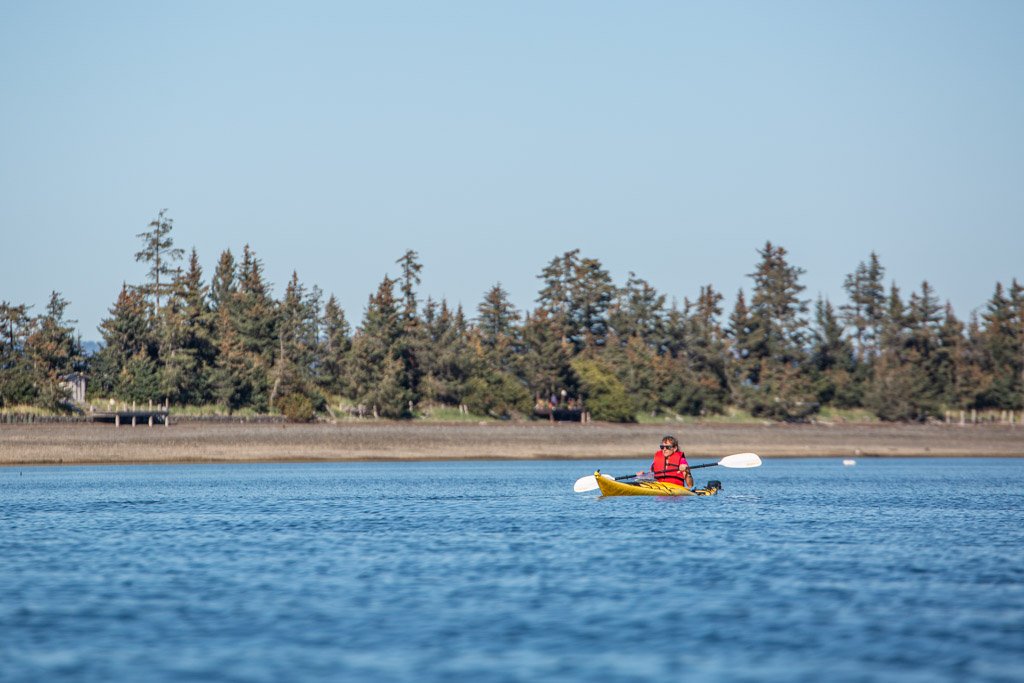
Kayaking
A popular activity for Alaskans and tourists alike. With all the lakes, rivers, and coastline Alaska has there are countless kayaking trips to be had. Kayaking tours are offered and usually average in the $100+ range per person, but renting kayaks and going on your own is possible for a lot less (not recommended for inexperienced kayakers).
Want to know an awesome place to head for kayak-lovers? Kayaker’s Cove near Seward, Alaska.
Dog Mushing
Are you an Iditarod fan? There are a few companies offering tourists their chance to mush a dog sled, shop different dog mushing tours.

Glacier Cruises
A great way to view Alaska’s glaciers from the comfort of a ship. You can expect prices at a minimum of $60 per person for partial day cruises and up to $200+ for all-day crusies. Some do include lunch and can have transportation to/from the hotel for an extra charge. Shop various Alaskan glacier cruises.

Flightseeing
Personally, if I recommended anywhere to splurge on your Alaskan travels it would be for at least one flightseeing tour. This is probably my favorite angle to view Alaska from. Prices can get quite expensive, but it offers you a very unique way to see the state’s beautiful sites.
Expect to pay $150 and up per person for a fixed-wing airplane flight tour, $350 and up per person on helicopter tours. Some tours include landings on glaciers, lakes, etc. Start shopping Alaska flightseeing tours in various parts of the state.
Cycling
Alaska, particularly the Anchorage area has a great network of bike trails. Adventurous cyclists can opt to take on bigger trips, such as the Dalton Highway, Denali Highway, and more. Cycling can be a cheap way to get around the state, albeit a slower way.

Wildlife Viewing
Bears, Moose, Dall Sheep, Caribou, Musk Ox… the list goes on. Hiring a guided tour can prove costly, some costing $400 per day. Don’t worry, wildlife doesn’t charge a fee themselves and with a little luck can even be viewed while keeping your eyes peeled during long road trips.
A great place to view wildlife is in Denali National Park on a bus tour which would set you back about $80-200 per person and will stop for wildlife so you can pour out and take photos or watch through binoculars. Shop wildlife viewing tours from around the state.
Cultural Activites
Want to learn more about Alaska Native People’s traditions, culture, history, and languages?
Check out the Alaska Native Heritage Center in Anchorage (Admission: $24.95 adult, $16.95 child) and the Anchorage Museum (Admission: Free for Members of the museum, $15 adult, $12 AK residents, $10 seniors, $10 students, $10 military, $7 children age 3-12yo and kids 2yo and under are free).
In Barrow (name recently restored to Utqiagvik) you can find the Inupiat Heritage Center ($10 adults, $5 students, $5 child, Seniors, and Children 6 & under are free). Shop different cultural tours.
*Enjoy and partake in these activities, but remember: At your own risk. You can die or be injured doing any of these activities.
Eat
Alaska has some damn good food, especially when it comes to seafood. Your best budget option for eating is to stop by a grocery store and stock up on your own food and supplies. If cuisine isn’t you’re priority your money can last a bit longer in Alaska by preparing your own meals.
Depending on where you’re going and what your plans are there may be no restaurants in your path anyway.
In most cities, Carrs, Fred Meyers, Walmart, and Target chain stores can be found. There are always locally ran food stores and or general stores as well to purchase goods from.
Foods to eat before you leave
- Fresh Alaska salmon (especially Copper River Red)
- Fresh Halibut
- Alaskan King Crab
- Fresh Alaskan Blueberries (sorry, only available in the late summer & fall)
- Reindeer Sausage

Microbreweries
Microbreweries seem to be popping up all over Alaskan cities and towns. I’m not going to go into too much detail here or list every single one, however, you can check out a list of breweries in Alaska.
Festivals To Try Alaskan Dishes At
If you happen to be around Anchorage on the weekend in the summer months, stop on by the Anchorage Market and Festival at 741 E 13th Ave (in summer 2021 it will held at the Dimond Center Parking Lot). Several food vendors from around Alaska offer up some yummy Alaskan dishes (and some from the outside too). On Saturdays, Sundays and Wednesdays check out the similar Tanana Valley Farmer’s Market in Fairbanks at 2600 College Rd.
Restaurants
In most cities, you can find restaurants serving up popular dishes from all over the US and the world. Alaska has a lot of good sushi restaurants. Some of my personal favorite restaurants in Alaska include Moose’s Tooth, Glacier Brewhouse, 49th State Brewery, Double Musky, Silver Gulch, Tracy’s Crab Shack, and Mile 229 Parks Highway Restaurant. These are just a few, of course, there are many many more!
Foraging & Berry Picking
Yes, it’s possible (although mostly limited to summer months) to forage for some of your own food, most commonly berry picking. It can be challenging but it is an option for those really looking to live off the land and save money.
I strongly recommend picking up some literature on berry picking and foraging in Alaska if this is something you’d like to try (we do have some poisonous berries and plants after all). Here a couple of books to check out:
Packing List
What you bring with you can vary wildly depending on the season, areas you visit and what activities you choose to do. Here are a few different lists to help you figure out what to bring. In larger towns and cities there are clothing, hunting and outdoor gear shops so anything you forgot or is missing from your kit can be purchased in Alaska if need be.
Check out my full Alaska packing list post, including lists for different seasons and activities
Summer
- Hiking boots
- Rain boots
- Rain jacket
- Rain pants
- Longsleeve fleece jacket
- Hoodie or sweater
- Long underwear
- Shorts
- Skirt
- Long sleeve tops
- Short sleeve tops
- Tanks tops
- Leggings (pro-tip- bring one pair of fleece lined leggings)
- Pants
- Undies
- Bra & sports bras
- A variety of socks (think for everyday, hiking, warmer wool socks)
- Bikini or swim shorts
- Sunglasses
- Sun hat or baseball hat
- Beenie
- Scarf
- Gloves
- Pajamas
- Sunscreen
- Mosquito repellant
*For spring and fall, I’d recommend adding a warmer jacket (I normally wear a snowboard/ski jacket in fall, winter and spring), and warmer gloves.
Camping & Hiking Gear
- 3-season tent
- Backpack (I personally recommend the Ariel 65 for women)
- Hydration Pack
- Sleeping bag (Make sure to grab one cold rated to the temperatures you’ll likely face overnight)
- Hiking boots
- Katadyn water purifier
- Campstove and Cooking set
Winter
- Snow boots
- Ski/snowboard or winter jacket
- Snow pants
- Longsleeve fleece jacket
- Hoodie or sweater
- Long underwear
- Fleece-lined leggings
- Long-sleeve tops
- Short-sleeve tops
- Pants
- Undies
- Bra & sports bras
- A variety of socks (every day, wool)
- Bikini or swim shorts (in case you end up at a hot spring or a hotel with a pool)
- Sunglasses
- Beenie
- Fleece or other heavy scarf
- Winter gloves
- Pajamas
Gear To Bring Regardless Of Season
- Daypack + raincover
- Drybag
- Camera + all necessary charging devices, lenses, filters, timers, and other trinkets
- Binoculars
- Headlamp
- Toiletries
- Optional: Inreach Explorer+ (Great for those planning to adventure a little more remotely where there may be no mobile coverage)
- Optional: Scrubba Washbag (For those looking to save money on laundry)

Safety
Alaska can be a wild place…
- Take your usual precautions when in towns and cities that you would in cities elsewhere in the world. Note that Alaska does have an extremely high rate of violent crime and sexual assaults, abuse, and violence. Anchorage is particularly rough as of recent. Violent crime has always been high here but seems to be elevating at a staggering level. Be careful.
- Much of Alaska is wild, remote, and treacherous. Attacks by wild animals do happen but aren’t common. Always make lots of noise when in the wilderness to help ward off animals, they are usually more scared of you than you are of them and it is always advisable to go as a group or at least with a buddy.
- Natural disasters and forces of nature can and will kill you in Alaska. Alaska is very prone to Earthquakes, extremely cold temperatures, avalanches, wildfires, tidal waves, treacherous roads, and much more will not hesitate to maim or kill you.
- Alaska’s weather is horribly unpredictable. You can even have extreme cold as well as extreme heat. Always be prepared, always bring layers and check the forecast but expect the worst. The weather can and will kill you.
If you’re coming to Alaska and you’re not a US citizen, head over to my post on the ESTA to see if you’re eligible for the visa waiver program.

Need Travel Insurance for Alaska?
Start shopping plans over at battleface, my go-to travel insurance choice, or over at World Nomads.







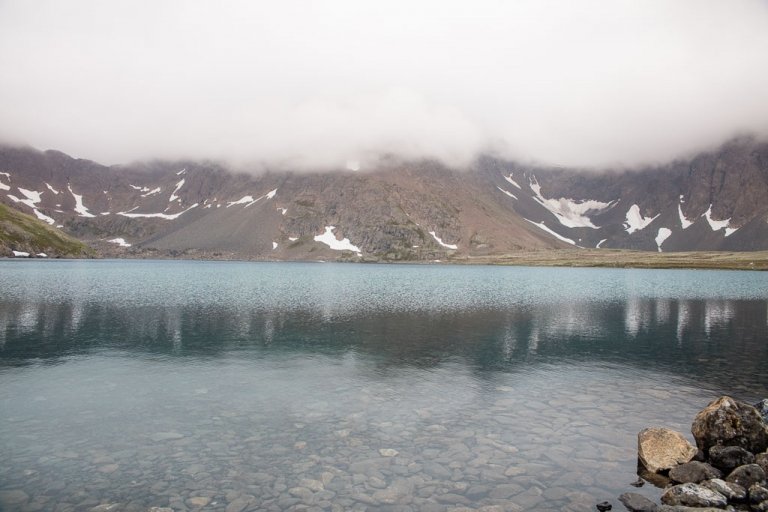






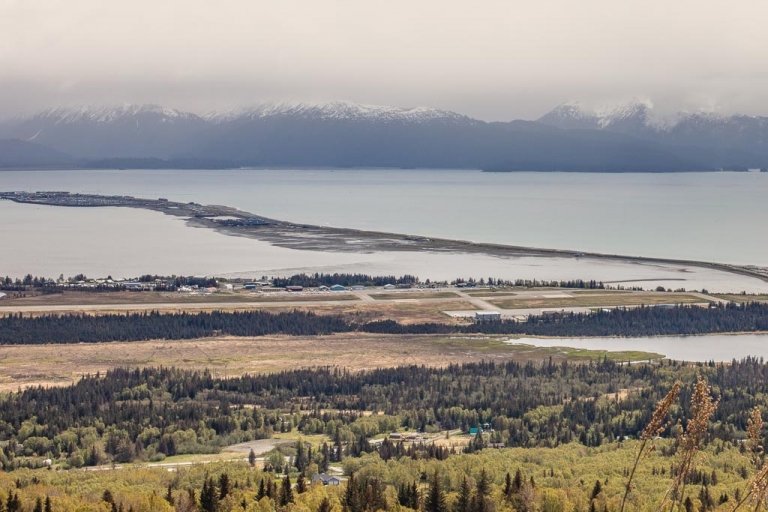


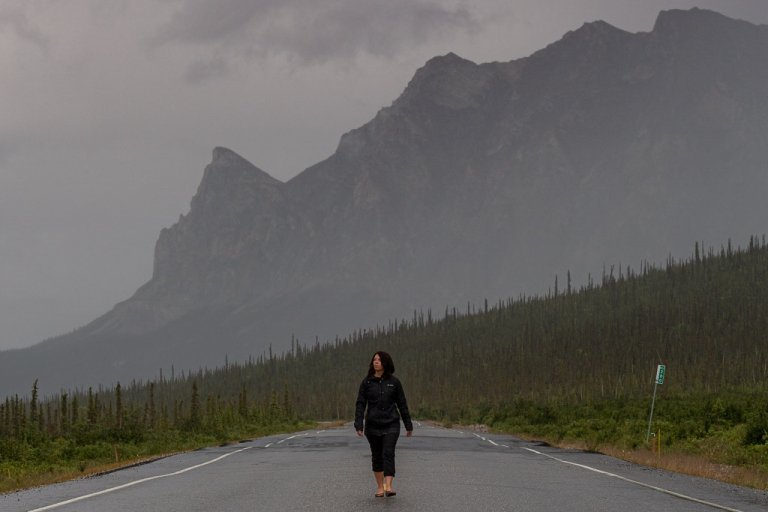





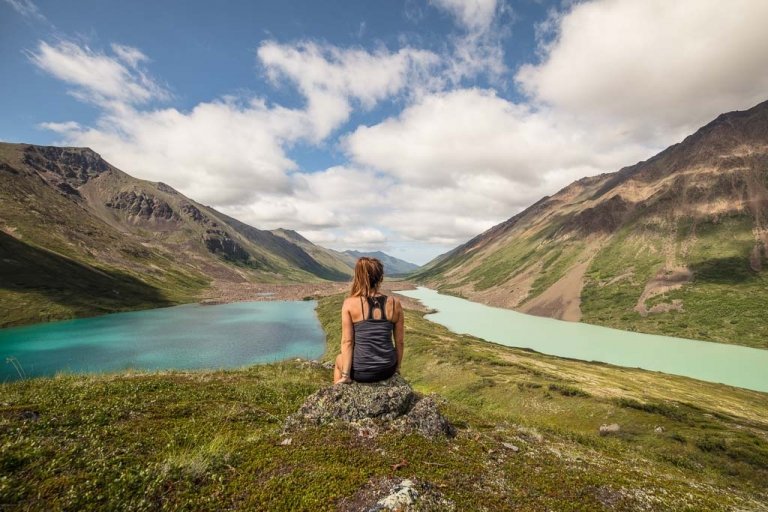






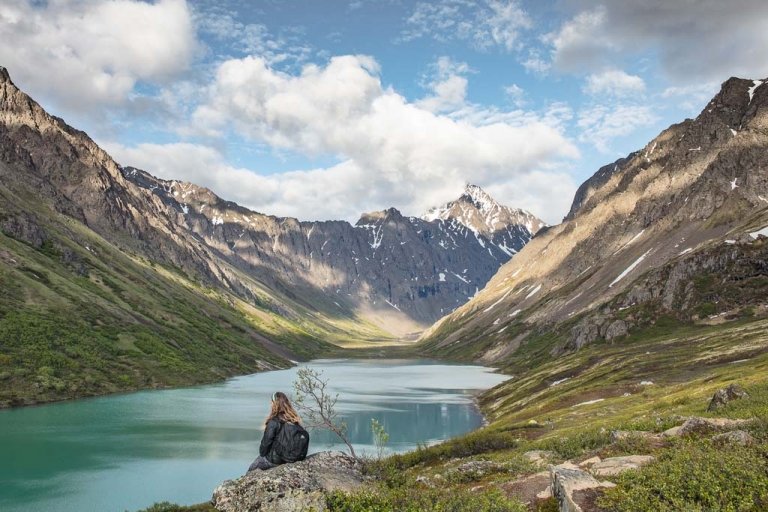
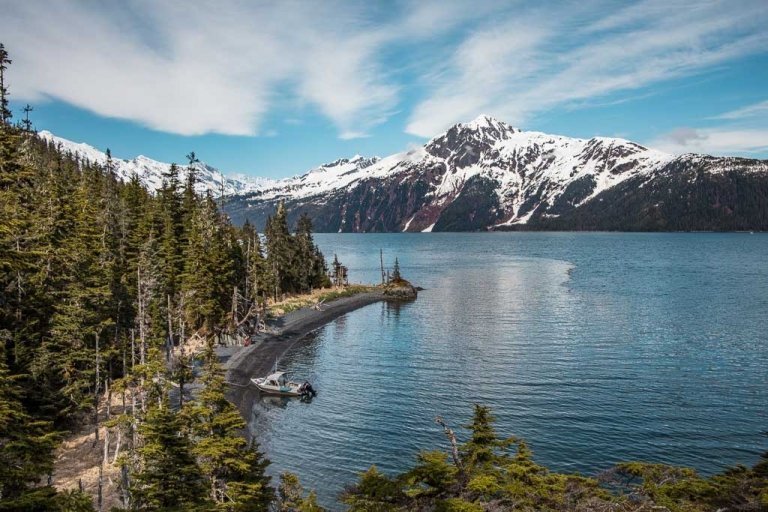









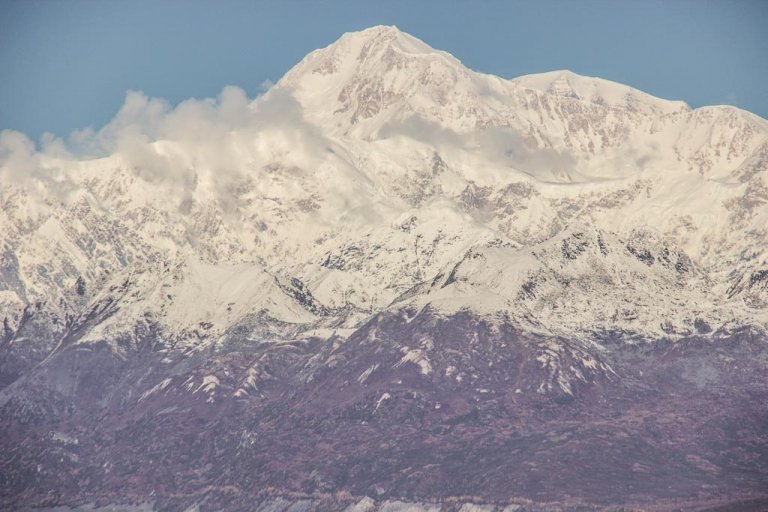












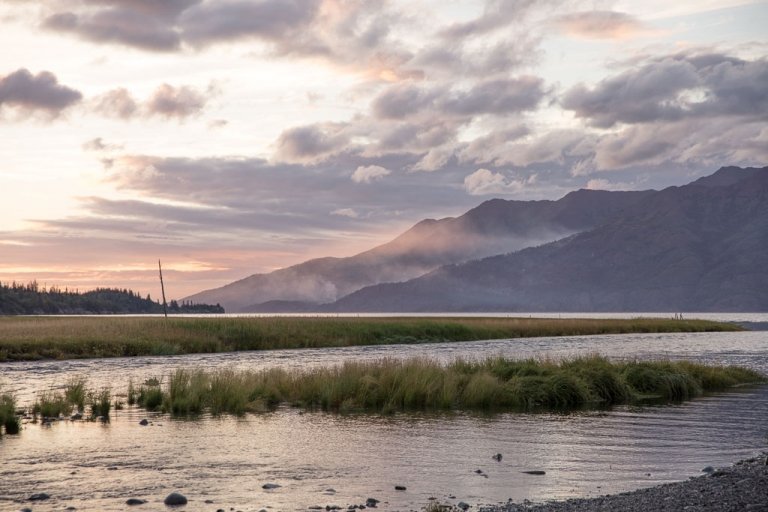



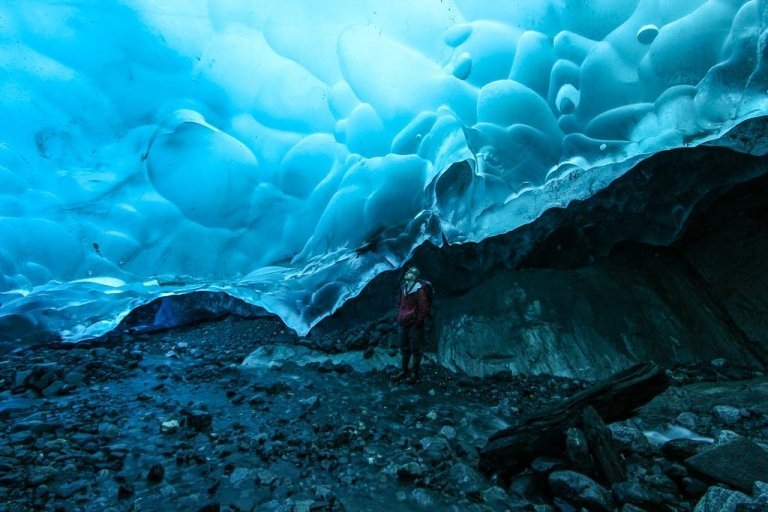


I hope you have wonderful time in Alaska.
Hello, thank you for providing information with this post. The post is very good.
I am airline support, I am here to share some interesting information about Alaska Airlines Cancellation Policy
. I also like to travel so I keep sharing interesting information about different destinations,
I am a little confused. I thought you could only fly into Brooks Camp?
Yes you have to arrive by flight, but I’m not sure how you’re confused about this. I didn’t even talk about the process of getting to Brooks Falls in this post, I’ve only stated the camping options.
Thanks for all the bits on information in here. It’s hard track down useful blogs that cover Alaska.
Glad to have helped, I feel you.. I live here and sometimes some info can be difficult to find!
Hi Nicki!
We are a family of four planning a trip to Alaska next summer. I’m so happy to have found your website with all these tips to help cut down on costs so we can get out and travel! PS: Amazing photos, you’re truly talented and well, you’re just so darn lucky to live in such a beautiful place! Can’t wait to visit 🙂
Hey Maria,
Thanks, I hope you and your family enjoy Alaska!
Thanks for this, came across this post as I begin planning for an Alaska trip in 2019!
Hope it helps you plan, I know Alaska planning can be daunting
Thanks for all these tips in here! So glad to have stumbled across your blog now that I’m finally researching a trip to Alaska for my boyfriend and I next summer.
No problem! Hope you guys have a great trip next summer 🙂
My boyfriend and I are planning on going to Alaska for our 5th anniversary. I have been so fascinated by photos of their sceneries, so my boyfriend told me that he wants to take me there. My favorite part of your article is when you said that there are a lot of kayaking trips in Alaska and that is usually $100 per person. I can’t wait to set my feet on Alaska.
Happy anniversary, I hope you guys have a wonderful trip here!
Happy to find some information on doing a self-guided Alaska trip. The tours I’ve seen are so expensive! Me and an old girlfriend are meeting in Washington for a cries to Alaska and then once to Anchorage we wanted to spend some time traveling around, and hopefully to Denali. An old fart bucket-list type trip, if you will. Thank you for the helpful tips!
Janet
Hi Janet,
Hope you two girls knock off all you Alaska bucket-list items! Have a fun cruise and trip up here. If you think of any questions don’t hesitate to comment again or shoot me a message 🙂
Hallo from Germany 🙂
Thanks for all the tips here! Me and my wife are planning to visit later toward the fall and would like to splurge on a flight seeing tour and were looking at what we could skimp on in the budget. Looks like we will be doing a lot of camping and cooking our own meals! But we don’t mind being outdoors more. What place or company would recommend for a rental company for car or 4×4?
Hi Matthew,
I hope you have a wonderful trip to Alaska. Definitely you can save some $$$ by camping and cooking meals, especially if you already have all the gear! I would just shop around on various car rental websites for the best deals. If you’re looking to do some off the beaten path 4×4 drives, or up the Dalton Hwy check out alaska4x4rentals.com.
Thanks for all the great information in this guide. It’s helped us immensely in planning our dream trip to Alaska without busting our budget!
Glad to hear it helped you plan your trip Brigitte. I hope you have an amazing time in Alaska!
It is so hard to find travel blogs with useful info on traveling Alaska! I’m planning a trip for August this year, thank you for this!
Hey Ruby,
I hope you have an amazing time on your upcoming trip to Alaska! Don’t hesitate to ask on here or e-mail me if you have more questions or need any help.